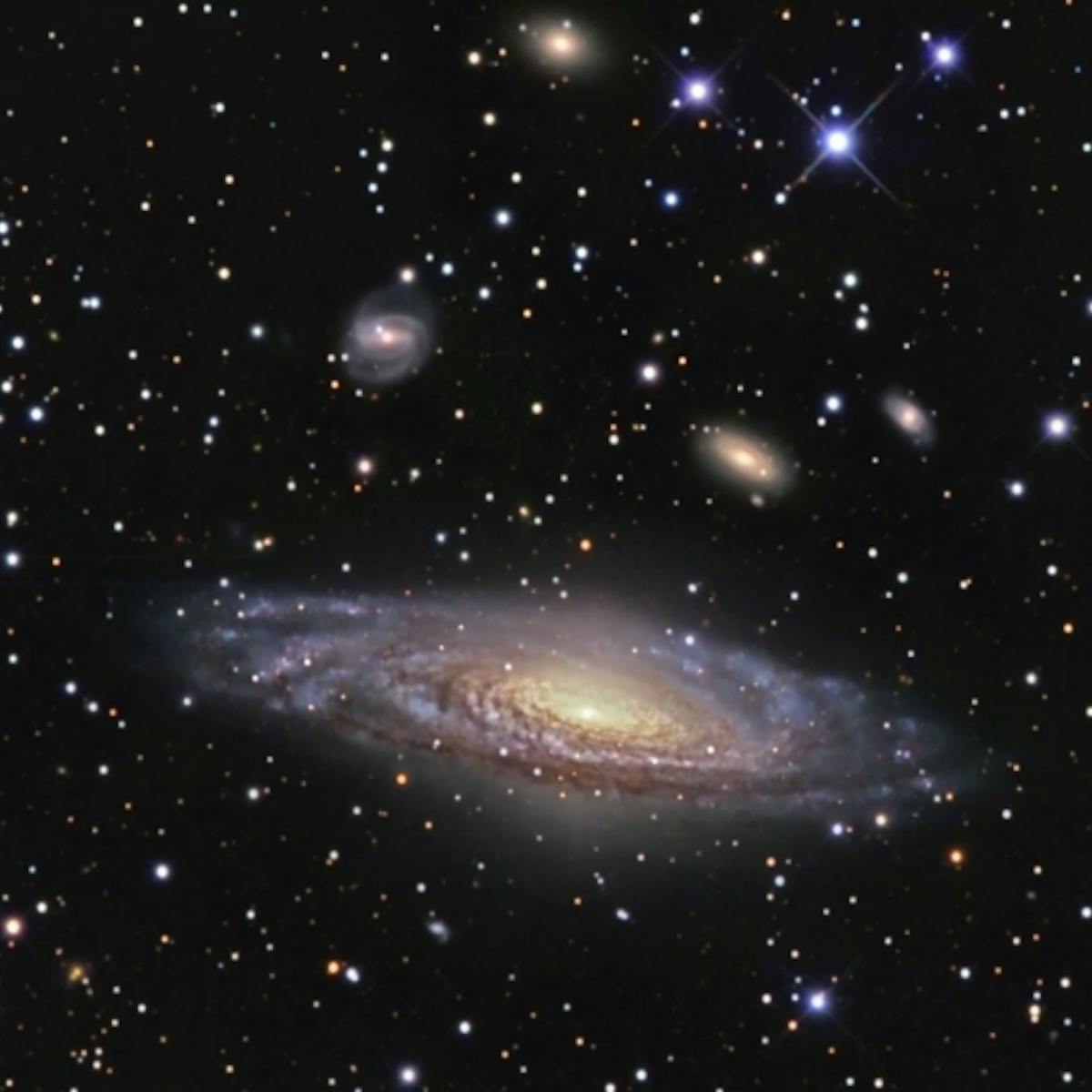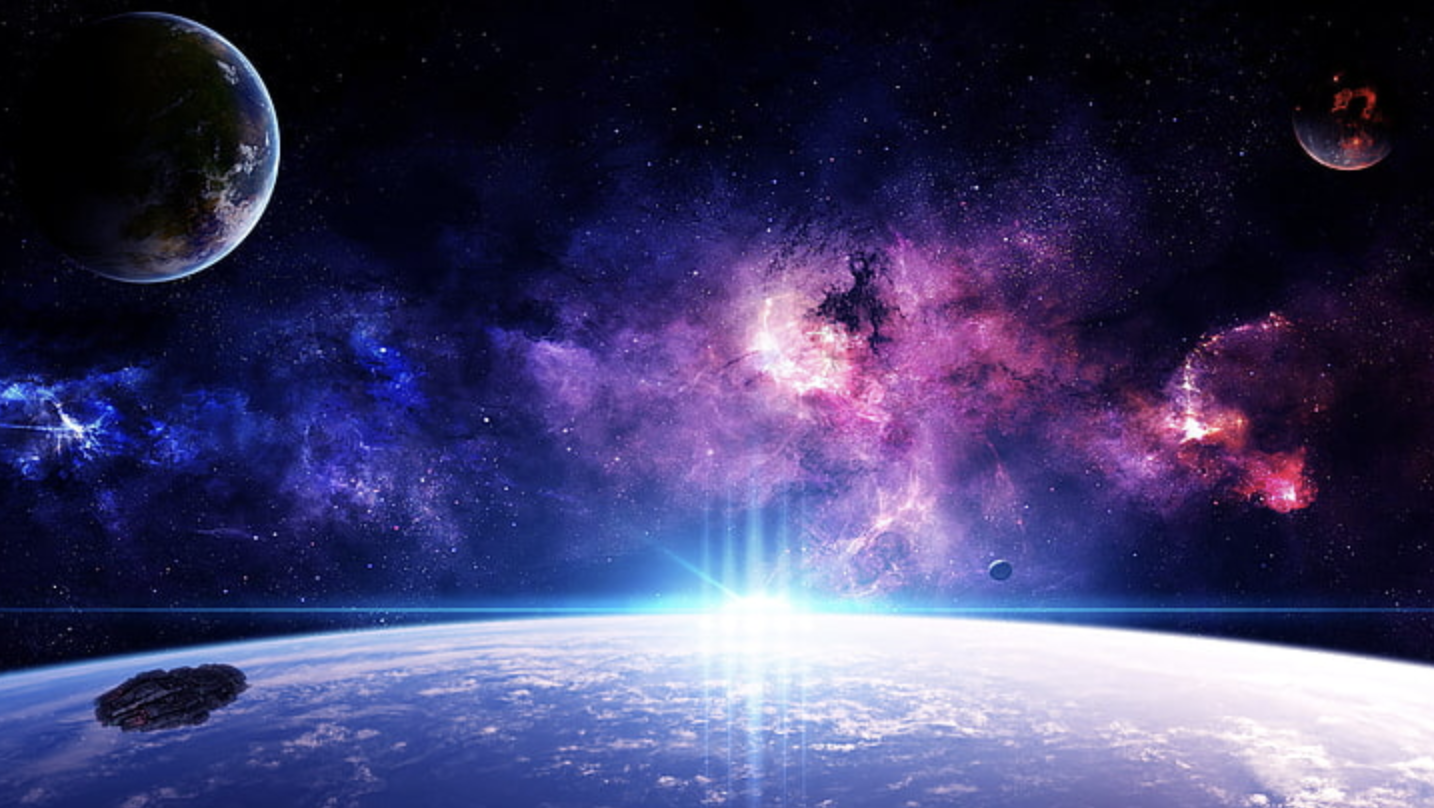Look up! You might recognize your home. Your home and mine, in this beautiful, expanding universe, is the Milky Way Galaxy (MWG). From Earth, we see it only as a band of light stretching across the horizon. To understand why, imagine spending your entire life in a room, and never leaving it. Would you know how your house looks like? No. The same applies to the MWG. However, thanks to the abilities of the human brain which led to the advancement in astronomical technology and knowledge, we know how our galaxy looks like. The MWG is one galaxy among billions of others. It is populated by billions of stars and planets, including our Sun, dust, and gas. Thus, every star we see whether with our eyes or telescopes resides within our galaxy. It is called the Milky Way because it appears as a milky band of light in the sky when observed from dark areas. That apparent light of course, is coming through the stars in the galaxy. Interestingly, civilizations throughout history named it similarly in their own languages. For example, the ancient Romans called it the Via Galactica, or "road made of milk". The Arabs called it Darb Al-Tabbana which translates to “haymakers’ way”.

The Milky Way is estimated to be around 13.6 billion years old and is enormous, at least 100,000 light-years across. So, if you were to send a beam of light from one edge of the galaxy, it will take 100,000 light-years to reach to the other edge. Our galaxy is not alone, it is part of a group of galaxies called the Local Galactic Group (LGG) which is made up of about 50 galaxies close to ours and is 10 million light years across.
The nearest galaxy within this group is the Andromeda Galaxy, and it is the most distant celestial object that can be seen by a naked eye. Beyond this group, there are at least billions of other galaxies. Galaxies are often classified into three categories: spiral, elliptical, and irregular. The MWG is an example of a spiral galaxy, thereby defining its structure. A spiral galaxy is made up of several parts, where some of the parts blend into each other: a nucleus, a central bulge, a disk, spiral arms, and a massive halo. Looking at the LGG, we can see that it resembles a country comprised of cities where each galaxy represents a city. In the case of galaxies, their citizens are stars, planets, and dust particles. However, cities as we know them on planet Earth, are comprised of living creatures: humans, plants, and animals, as well as buildings, streets, and many more features. To make a city habitable for people, several aspects need to be taken into consideration. First, accommodation such as apartments, villas, and hotels must be constructed considering safety measures along with essential infrastructure and utility. Second, societal facilities such as hospitals, pharmacies, supermarkets, banks, restaurants, and other services must be provided. Within each facility, qualified individuals must be employed.

Each individual has the right to have a stable income coming from a bigger entity, often the government. Third, schools and universities, and places of worship need to be established for education, meditation, and worship purposes. Fourth, roads need to be worked, and transportation methods have to be provided. The list goes on to make a city habitable. To consider the mentioned aspects , an administrative system as well as a legal system must be operating for life to run smoothly. More importantly, money is essential for establishing the essential pillars of a city. Considering galaxies, they are astronomical cities that governed through the use of gravity, heat, matter, dark matter, beautiful elements you see in the periodic table, and much more. They are a million times more sophisticated than Earth cities. They are constantly flying in the space faster than airplanes. They are populated by billions of stars and other bodies; however, the most populated cities on Earth are in the range of a couple of millions. The MWG is 13.6 billion years old, whereas some of the oldest cities on Earth date back only thousands of years. In addition, to establish a place for living within the frame of a city, a lot of money is required, which is not the case for galaxies, for they created with power, will, and knowledge that exceeds that of a human. Cities also require tremendous amount of energy to generate electricity. Moreover, while stars in galaxies are harmonic in terms of their orbits, that is not necessarily the case for commuting on Earthly cities. Many accidents happen almost every day. In addition, while all buildings on earth need repair and maintenance, that is not the case for stars in galaxies. Even more so, unlike galaxies which shine brighter because of the huge number of stars they encompass, cities can run into severe problems if the number of populations increased significantly.

A city can become prone to pollution, overcrowding, and difficult living conditions. The oldest city throughout history differs from one source to another, but the majority agrees that Jericho, located in Palestine, and Aleppo, in Syria were among the oldest cities that are still inhabited until this day. Ancient cities included houses, resources for food such as cultivating plants and sheep breeding, as well as water irrigation systems. However, cities today are much more sophisticated. Cities require extensive systems for housing, transportation, electricity, clean water, sanitation, production of goods, and many more. Another important factor is security, for safety is a top priority when choosing a city to live in. Here comes in the law and the legal system. All of this requires tremendous efforts from humans with expertise in various fields. It also requires precise urban planning given a stable money supply. It requires great minds to come together to establish a sustainable, resilient cities that would be homes for millions of generations to come. Acknowledging what it takes to build a city, do you think a strong wind could push sands around to build a house with kitchen, bathroom, and bedroom you? Do you think the unconscious nature would claim responsibility of you and provide you with a “natural hospital”? Do you think the city you live in could be established by chance? could wind blow together materials to make roads? how about schools and supermarkets? Is nature smart enough to take part in urban planning?
Just like it takes people to make cities, galaxies which are much more sophisticated, must have a Creator who made them. If houses on planet earth did not appear by chance, then how come enormous galaxies appear by chance? In such a vast, expanding universe, blind, deaf, and dummy nature cannot keep up with all that is happening out there. There must be an Infinite Power and Knowledge to create galaxies and control them. If that was not the case, then we would not have been blessed with the location of Earth in the arm of the milky way galaxy. The perfect location came out of knowledge, wisdom, and mercy for humanity to thrive on planet Earth. We are made of stardust, the elements in our bodies were all out there in the universe. In essence, we and the galaxies in the universe are interconnected. On a macro level, our eyes can see part of the galaxy we live in due to stars shining in that part. It is also because of the specific location of the Earth. Had we not have our solar system as we know it today, with its precise measurements and distances between orbits and bodies, we could not have been here. It is obvious that living beings on Earth are interconnected with the Sun, the Moon, the other planets for stabilizing the solar system, the stars and dust particles in the galaxy. On a micro level, tiny dust particles and atomic particles were instructed to come together to shape galaxies including ours. For example, the MWG was structured in a way to include a solar system which includes a habitable planet. From tiny particles to enormous galaxies in the universe, an Infinite Power is holding these bodies together. An Infinite Intelligence and Wisdom placed us at the edge of the galaxy, far away from the engulfing black hole.

Thus, it is clear galaxies are connected to the entire universe and to you. The Maker of the MWG must be the maker of the stars within it, He must be The Maker of our star, the sun, through which we depend on to live. He is the All-Wise (Al-Hakeem) who knows where to locate the planet inhabited by living beings. He is the All-Enumerating One (Al-Muhsi), He knows the count and details of things, he knows the count of stars, galaxies, black holes, and knows exactly what dark matter is. He is of course, The Best of Shapers (Al-Musawwer) who beautifully designed galaxies in astonishing colors and shapes. If our location was in a different part of the Milky Way galaxy, life may not have existed, let alone if our galaxy was not here in the first place. Would you be able to mimic a galaxy and sustain it? We have seen that it takes a lot to make city, then how about something as sophisticated as a galaxy? Indeed, the galaxies are gifts from God that are given to us at no cost. For such precious gifts, the Most Loving Creator wants from us three things in return: remembrance (dhikr), reflection (fikr), and gratitude (shukr). Remembering him leads us to acknowledge the He is the true source of life. He is the one who created the MWG, the solar system, the sun, and made them apparent reasons for us to live. Reflecting upon the galaxies makes us appreciate His Uniqueness and Oneness, for like snowflakes, no two galaxies are exactly alike. It also shows us the value of His infinite wisdom that is manifested in locating the sun in the milky way galaxy. We should be grateful to Him for giving us eyes to see His beautiful creation, and minds to invent tools that aid us to have a bigger and a better picture of the hidden beauty out there. Galaxies teach us that although each is orbiting in its own path, they are all part of one universe. Likewise, while we may live as individuals, we will always need each other to survive.